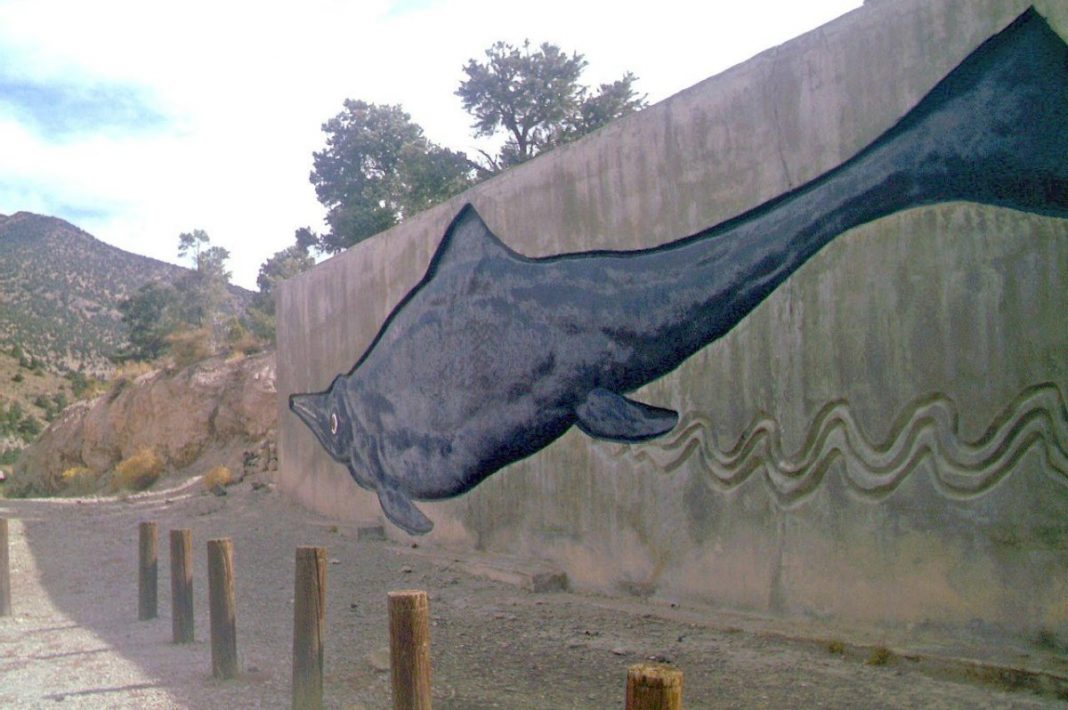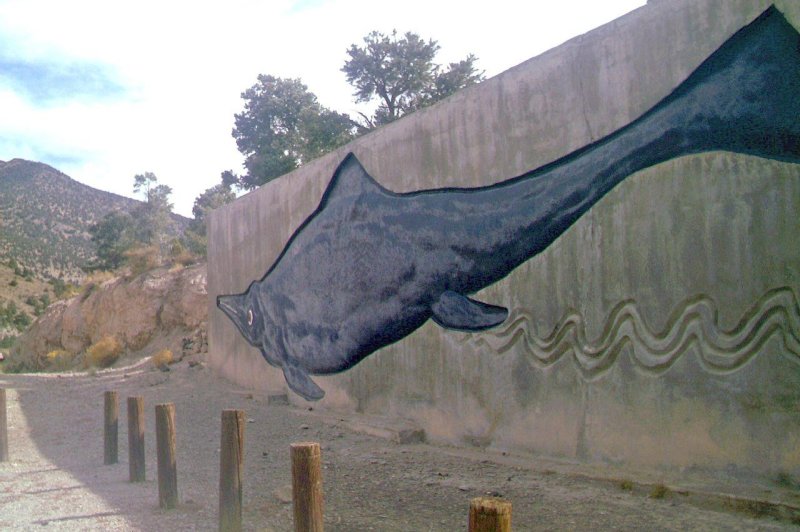Researchers believe they have found an explanation as to what happened to dozens of prehistoric marine reptiles whose fossils blanket Nevada’s Berlin-Ichthyosaur State Park. Image courtesy of Wikimedia Commons
Dec. 19 (UPI) — Researchers believe they have found an explanation as to what happened to dozens of prehistoric marine reptiles whose fossils blanket Nevada’s Humboldt-Toiyabe National Forest.
The Berlin-Ichthyosaur State Park is filled with the fossils of the ichthyosaur, one of the largest marine reptiles to ever inhabit the planet. Nick Pyenson, curator of fossil marine mammals at the Smithsonian National Museum of Natural History, said there are other sites with a larger density of fossils but Nevada has puzzled researchers for years.
Previous hypotheses had the reptiles, which have a resemblance to mammals like whales and dolphins, were stranded in Nevada as they escaped a poisonous algae bloom. Pyenson’s research team presented evidence that ichthyosaurs actually migrated to the area to give birth nearly 230 million years ago, much like whales or fellow reptiles like turtles do today.
“Here, we show that similar grouping behaviors evolved in an early marine tetrapod lineage, documented by dozens of specimens of the giant ichthyosaur Shonisaurus in the Luning Formation in West Union Canyon, Nevada,” the team wrote in Current Biology.
The findings indicate more than a theory about how these particular fossils found their resting place. Pyenson said it also suggests behaviors that have translated to other species that have evolved before and after the ichthyosaur. Blue and humpback whales are known to migrate far from areas where they — and predators — feed to safely give birth. Whales evolved after ichthyosaurs, as mammals branched off from reptiles about 325 million years ago.
The Berlin-Ichthyosaur State Park was founded in 1957. It is home to the largest collection of ichthyosaur fossils in the United States.

